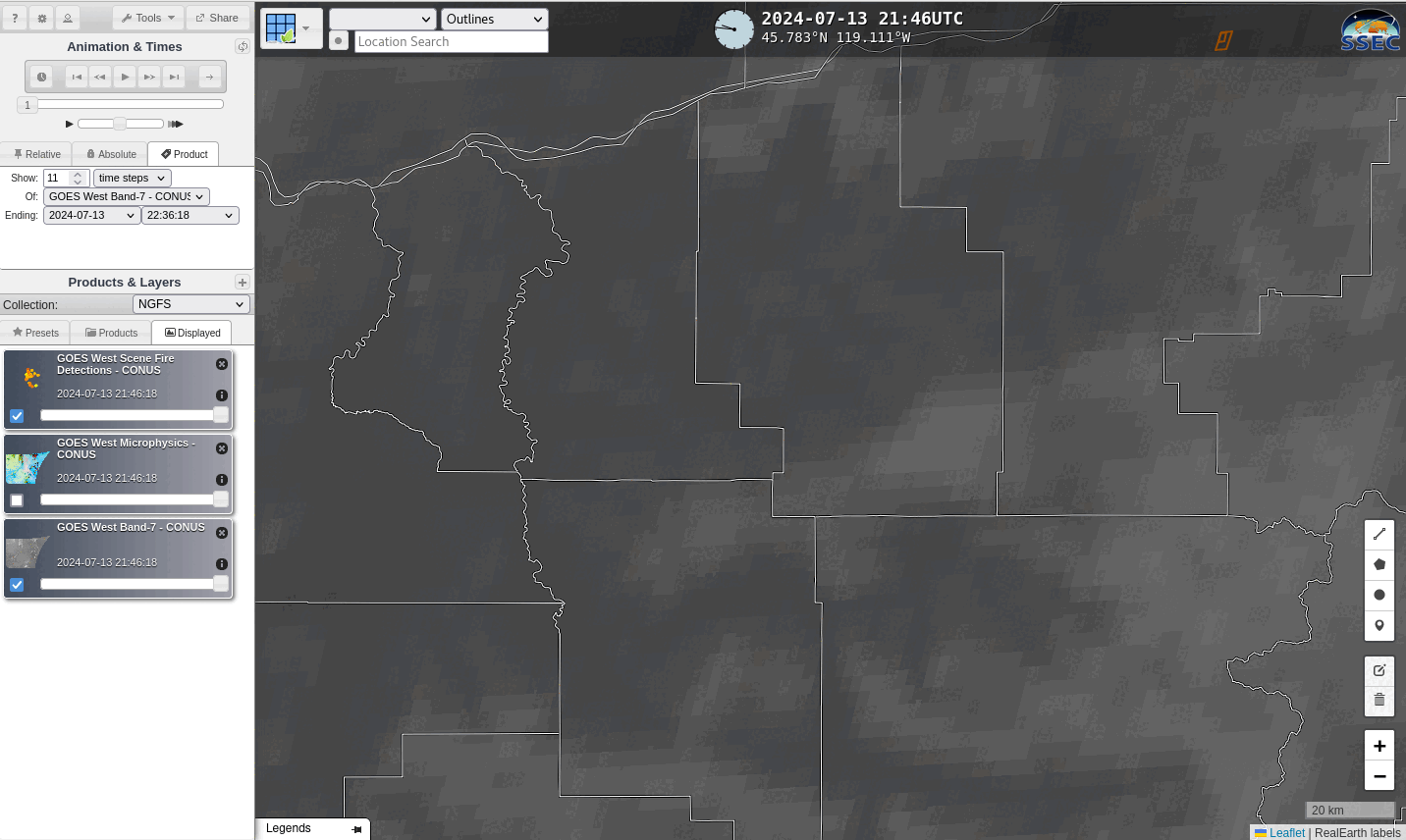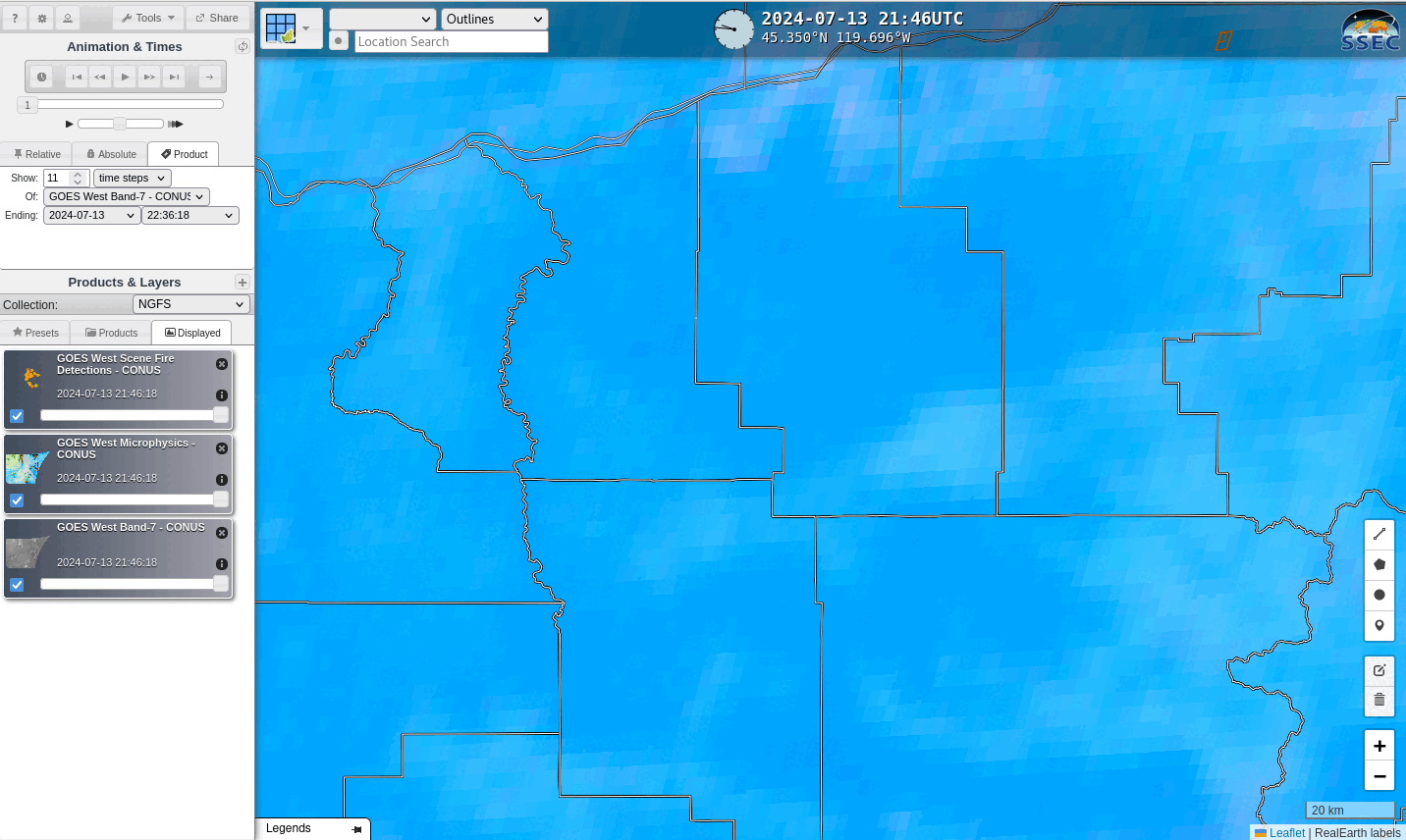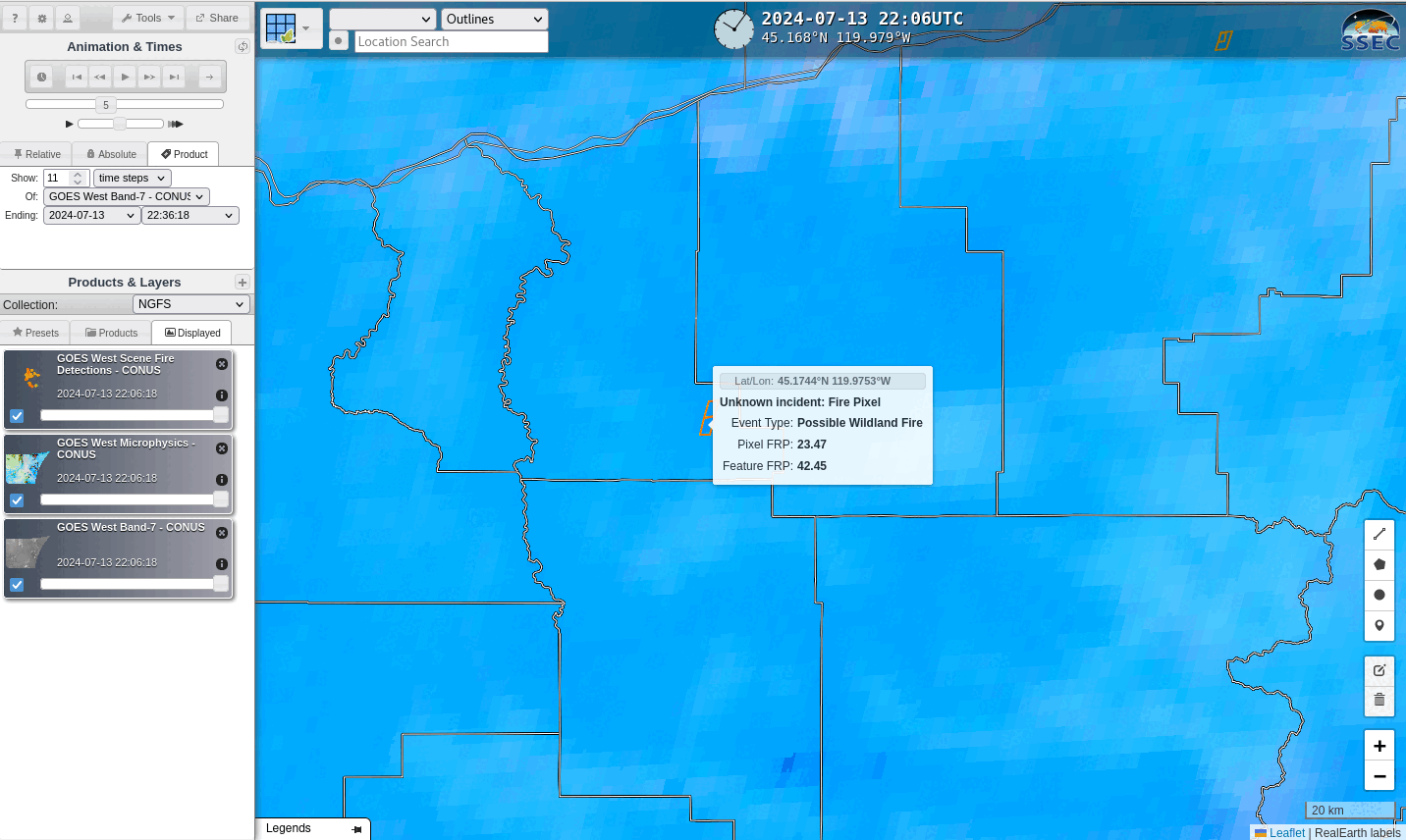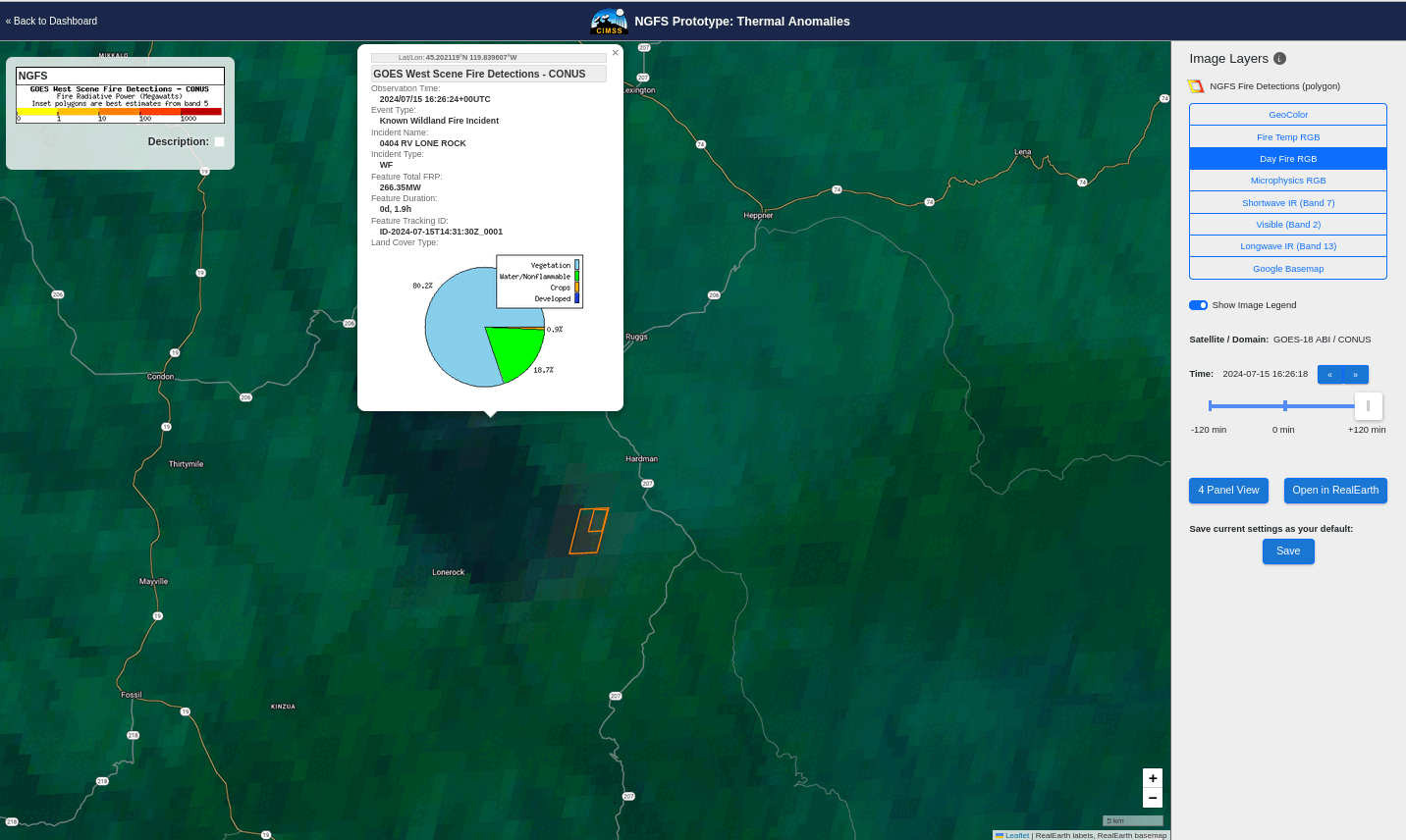NGFS and the Lone Rock fire in Oregon
GOES-18 True Color imagery (from the CSPP Geosphere website) shows the growth of the Lone Rock fire burn scar over rural north-central Oregon (note the Columbia River at the top of the imagery) from 13 July 2024 (when the fire started in Gilliam County) to 17 July 2024. Careful examination of the True Color imagery shows a fire signal (in the form of a smoke plume) first appearing at 2206 UTC on 13 July 2024. How did NGFS — the Next Generation Fire System — alerts handle this event?
GOES-18 Band 7 shortwave infrared (3.9 µm) imagery, below, from the NGFS Real Earth instance shows 5-minute time steps before the time of the fire. It’s very difficult to determine the fire location from the Band 7 imagery alone. (Important: these GOES data are terrain-corrected; that is, the effects of parallax on the satellite detections have been removed. Thus, the actual location of the satellite pixels where fires are detected is defined with greater precision after applying terrain correction. This blog post (thanks Bill Line!) discusses parallax in surface features).

The NGFS Microphysics RGB (Quick Guide) below, for the same times as the Band 7 imagery above, shows a color change as the fire develops.

A feature of the Real Earth instance for NGFS is that the probe gives you information about the fire, as shown below. The Fire Radiative Power is shown, and the outline color of the pixel is a function of that number — note it changes from orange to red during the animation as the fire intensifies.

The NGFS Alerts Dashboard will continue to detect a fire after it has started (although Alerts are most useful for initial fire detections), as shown below in a screen shot from just before 1400 UTC on 18 July 2024. There are five alerts present for the Lone Rock fire — that has moved into Morrow County by that time — shown in grey. These alerts are labeled as being part of the Lone Rock fire because the fire was known at the time. These alerts are associated with new satellite pixels into which the fire has spread. They can also be due to fires flaring up again after a quiescent period.

Satellite Imagery from one of those alerts is shown below, and I’ve chosen the Day Cloud Fire RGB because it highlights the burn scar that is apparent in the Geosphere True Color imagery above. Recall that the pixels at this website can be queried to determine land surface features — that is shown in the stepped toggle below. The fire at this time was burning in a region of vegetation that included grassland, chapparal and forests.

The CIMSS NGFS website is here. Note that not all functionality shown in this blog post is publicly available.

